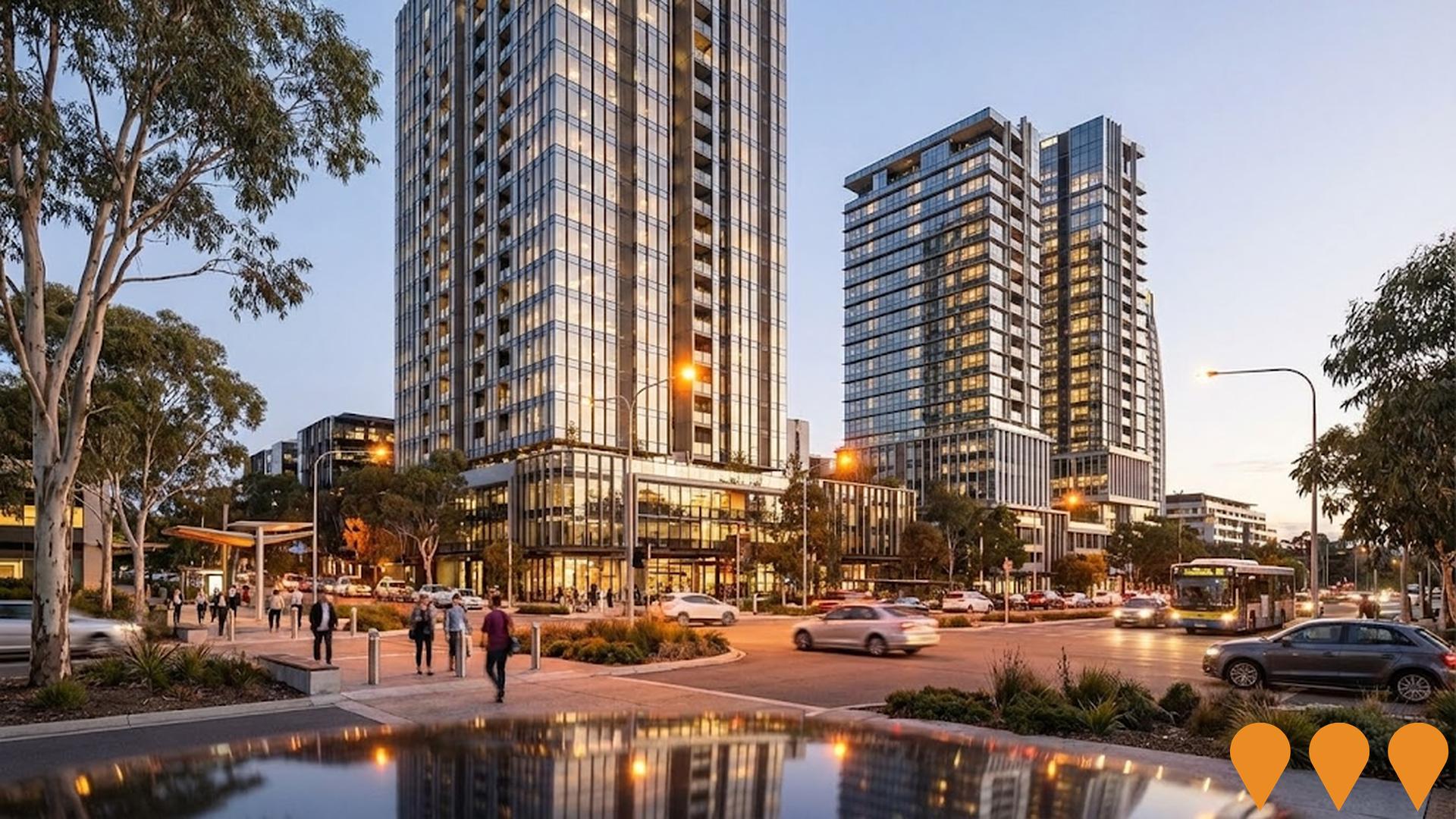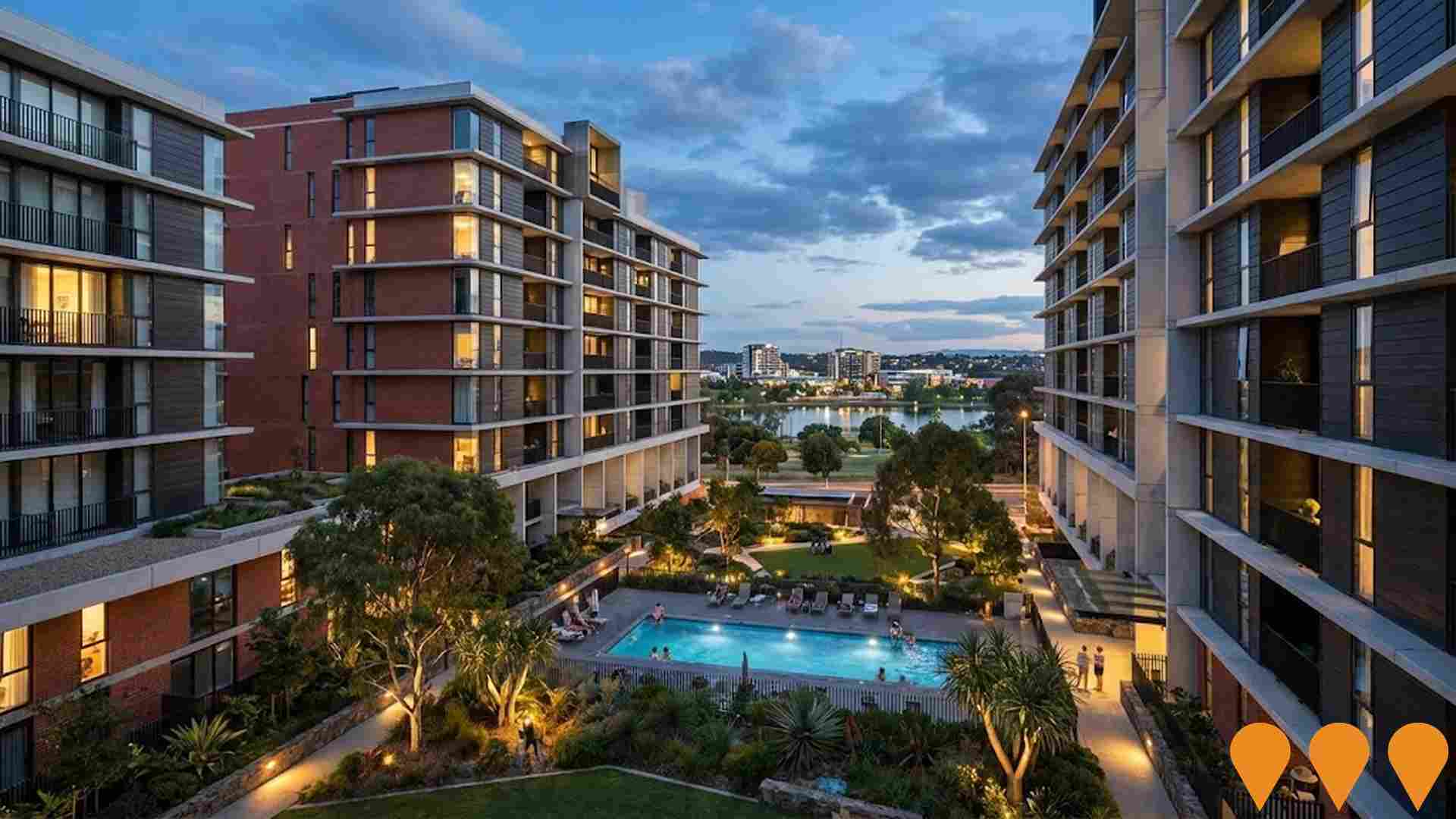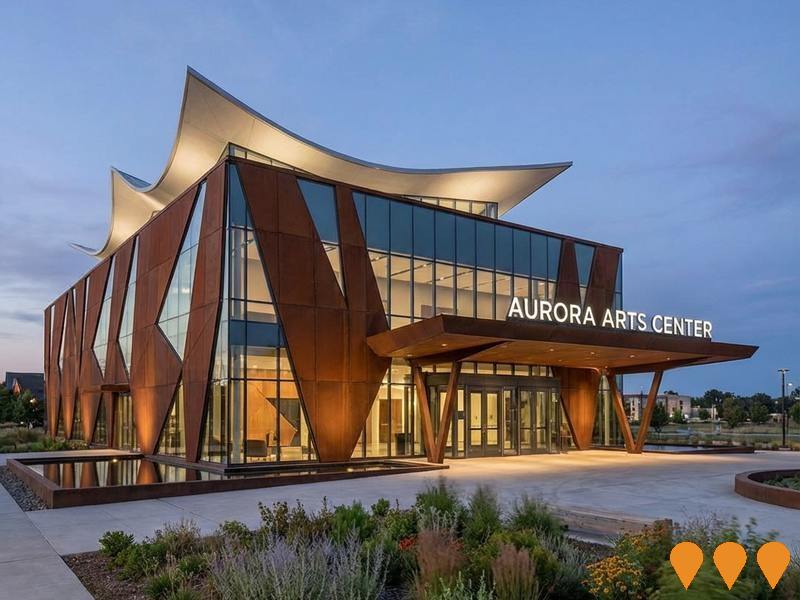Chart Color Schemes
est. as @ -- *
ABS ERP | -- people | --
2021 Census | -- people
Sales Activity
Curious about local property values? Filter the chart to assess the volume and appreciation (including resales) trends and regional comparisons, or scroll to the map below view this information at an individual property level.
Find a Recent Sale
Sales Detail
Population
An assessment of population growth drivers in Weetangera reveals an overall ranking slightly below national averages considering recent, and medium term trends
Based on AreaSearch's analysis, Weetangera's population is around 2839 as of Aug 2025. This reflects an increase of 44 people (1.6%) since the 2021 Census, which reported a population of 2795 people. The change is inferred from the estimated resident population of 2841 from the ABS as of June 2024 and an additional 18 validated new addresses since the Census date. This level of population equates to a density ratio of 1796 persons per square kilometer, which is above the average seen across national locations assessed by AreaSearch. Weetangera's 1.6% growth since census positions it within 0.8 percentage points of the SA3 area (2.4%), demonstrating competitive growth fundamentals. Population growth for the area was primarily driven by overseas migration that contributed approximately 87.2% of overall population gains during recent periods, although all drivers including interstate migration and natural growth were positive factors.
AreaSearch is adopting ABS/Geoscience Australia projections for each SA2 area, as released in 2024 with 2022 as the base year. For any SA2 areas not covered by this data, and for years post-2032, age group growth rates from the ACT Government's SA2 area projections, with 2022 as a base, are adopted. As we examine future population trends, projections indicate a decline in overall population, with the area's population expected to reduce by 495 persons by 2041 according to this methodology. However, growth across specific age cohorts is anticipated, led by the 55 to 64 age group, which is projected to grow by 27 people.
Frequently Asked Questions - Population
Development
Residential development activity is lower than average in Weetangera according to AreaSearch's national comparison of local real estate markets
Weetangera averaged approximately 10 new dwelling approvals annually over the past five financial years, totalling 54 homes. As of FY26, 0 approvals have been recorded. Between FY21 and FY25, an average of 2.2 people moved to the area per new home constructed, reflecting robust demand that supports property values.
New homes are being built at an average expected construction cost value of $471,000, indicating developers target the premium market segment with higher-end properties. Compared to the Australian Capital Territory, Weetangera records about 68% of the building activity per person and places among the 38th percentile of areas assessed nationally, offering more limited choices for buyers and supporting demand for existing dwellings. Recent construction comprises 33.0% detached dwellings and 67.0% attached dwellings, providing accessible entry options that appeal to downsizers, investors, and entry-level buyers. This shift from the area's existing housing composition of 92.0% houses indicates decreasing availability of developable sites and reflects changing lifestyles requiring more diverse, affordable housing options. With around 460 people per dwelling approval, Weetangera shows a developed market.
Population projections indicating stability or decline suggest reduced housing demand pressures in the future, benefiting potential buyers.
Frequently Asked Questions - Development
Infrastructure
Weetangera has emerging levels of nearby infrastructure activity, ranking in the 26thth percentile nationally
No factors impact an area's performance more than alterations to local infrastructure, major projects, and planning initiatives. AreaSearch has pinpointed zero projects that could significantly affect this region. Notable projects encompass the Belconnen Town Centre Master Plan & District Strategy, Belconnen Town Centre East Precinct (Republic Phase 2 & Future), Belconnen Lakeshore - Connected Waterfront Precinct, and Belconnen Mixed-Use Towers. The following list outlines those most pertinent.
Professional plan users can use the search below to filter and access additional projects.
INFRASTRUCTURE SEARCH
 Denotes AI-based impression for illustrative purposes only, not to be taken as definitive under any circumstances. Please follow links and conduct other investigations from the project's source for actual imagery. Developers and project owners wishing us to use original imagery please Contact Us and we will do so.
Denotes AI-based impression for illustrative purposes only, not to be taken as definitive under any circumstances. Please follow links and conduct other investigations from the project's source for actual imagery. Developers and project owners wishing us to use original imagery please Contact Us and we will do so.
Frequently Asked Questions - Infrastructure
New Northside Hospital (North Canberra Hospital Redevelopment)
Development of a new major tertiary hospital on the existing North Canberra Hospital campus (formerly Calvary Public Hospital). The project involves an investment of over $1 billion to construct a new state-of-the-art clinical services building, expanded emergency department, and modern inpatient facilities to replace aging infrastructure.
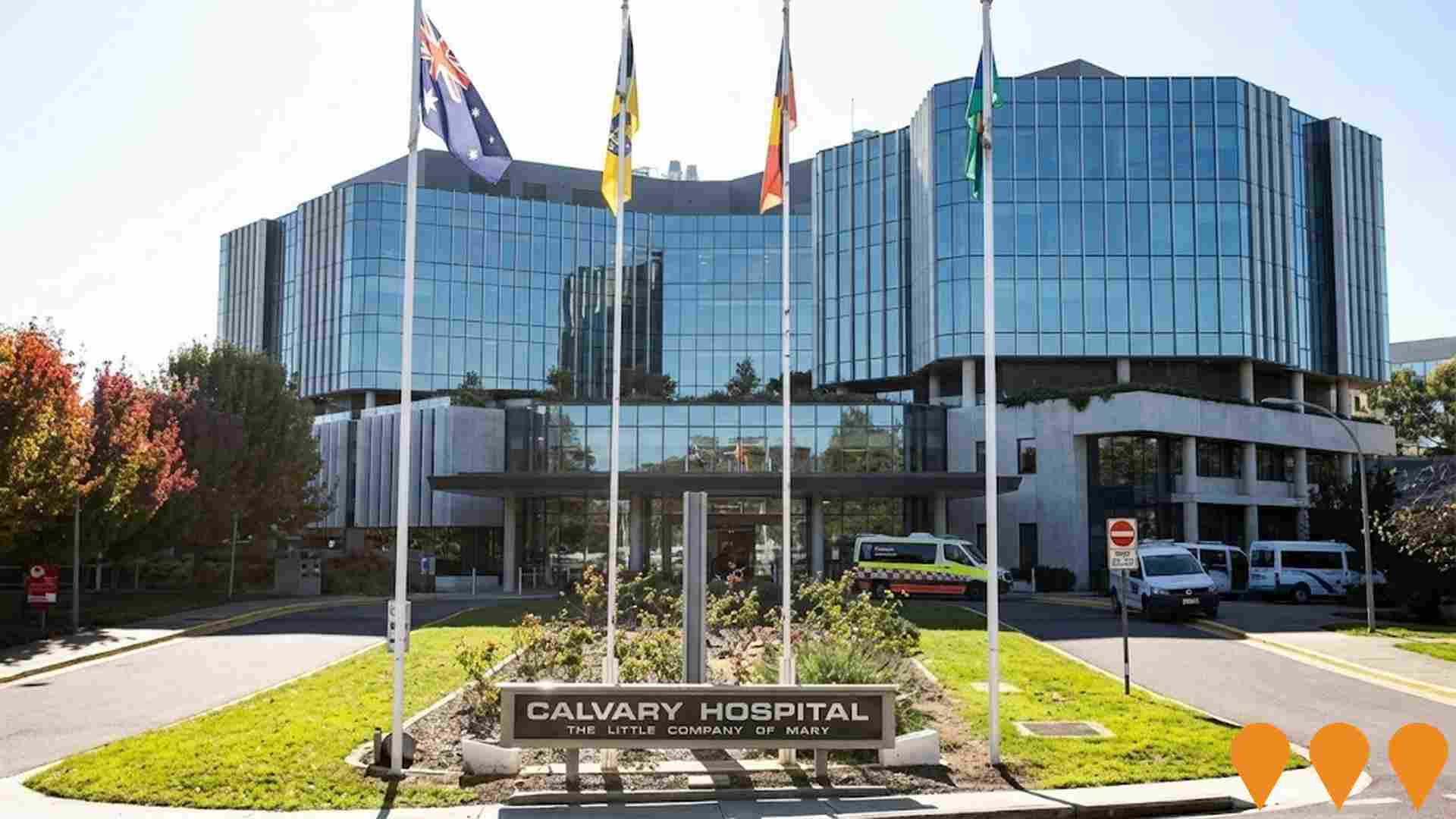
Belconnen Town Centre Master Plan & District Strategy
Ongoing urban renewal of the Belconnen Town Centre guided by the 2023 District Strategy and 2016 Master Plan. Current works focus on the 'Blue-Green Network' with upgrades to Lake Ginninderra's foreshore, Emu Bank, and the implementation of the Southern Gateway Corridor. The project encompasses mixed-use high-density developments, improved pedestrian connectivity, and public transport integration.
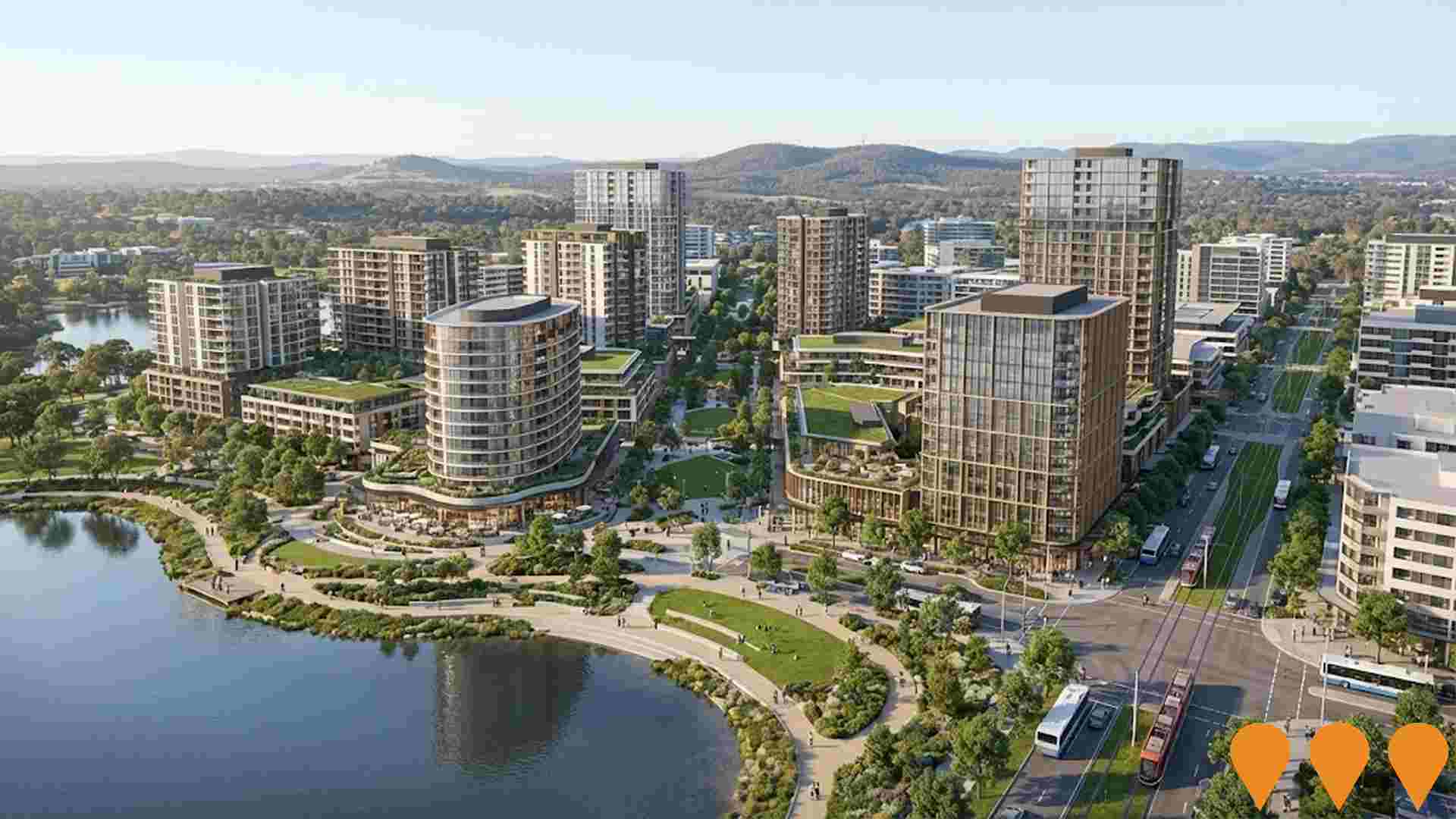
Belconnen Lakeshore - Connected Waterfront Precinct
Belconnen Lakeshore is an ACT Government land release and urban renewal project on the Lake Ginninderra foreshore at Emu Inlet. Guided by the Belconnen Town Centre Place Design Brief, the project will transform four waterfront sites including the Circus Sites Precinct and the former Water Police site into a mixed use precinct with new public waterfront promenades, upgraded open space and taller mixed use buildings stepping up from the lake edge. The Suburban Land Agency has run a two stage tender process for the land release and evaluated tenders, but as at mid 2025 the lakeshore blocks have not yet been sold, with final sale and detailed development design still to be confirmed.

Ginninderry Estate - Stages 4-7 (Strathnairn & future Macnamara)
Canberra's largest master-planned community spanning the ACT-NSW border, delivering approximately 11,500 dwellings total, with ongoing stages immediately adjacent to and west of Dunlop.
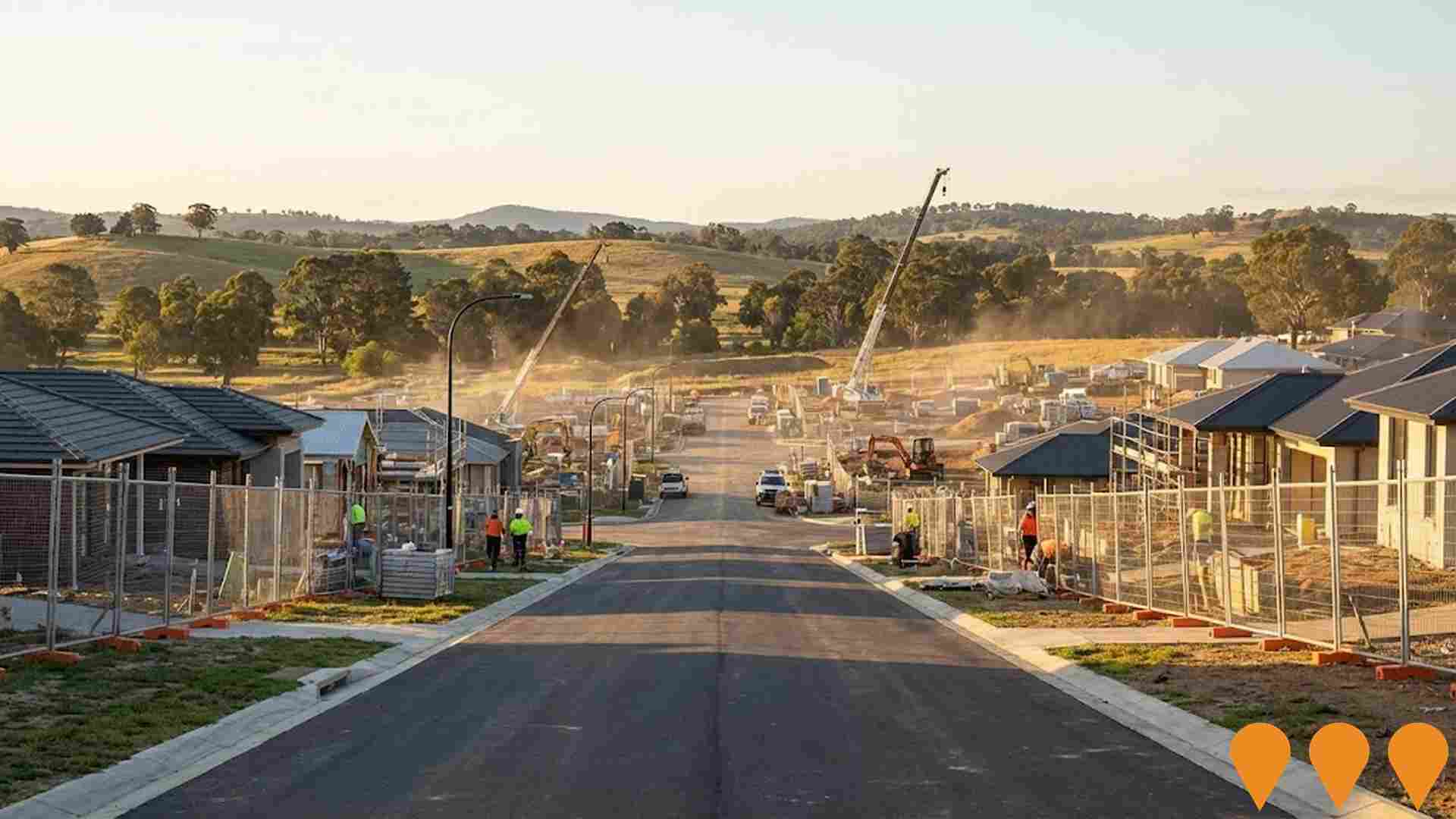
Belconnen Town Centre East Precinct (Republic Phase 2 & Future)
Major mixed-use redevelopment of the former Belconnen Bowling Club site and surrounding land in Belconnen Town Centre (approx. 5 km from Dunlop), delivering apartments, retail, and public spaces.
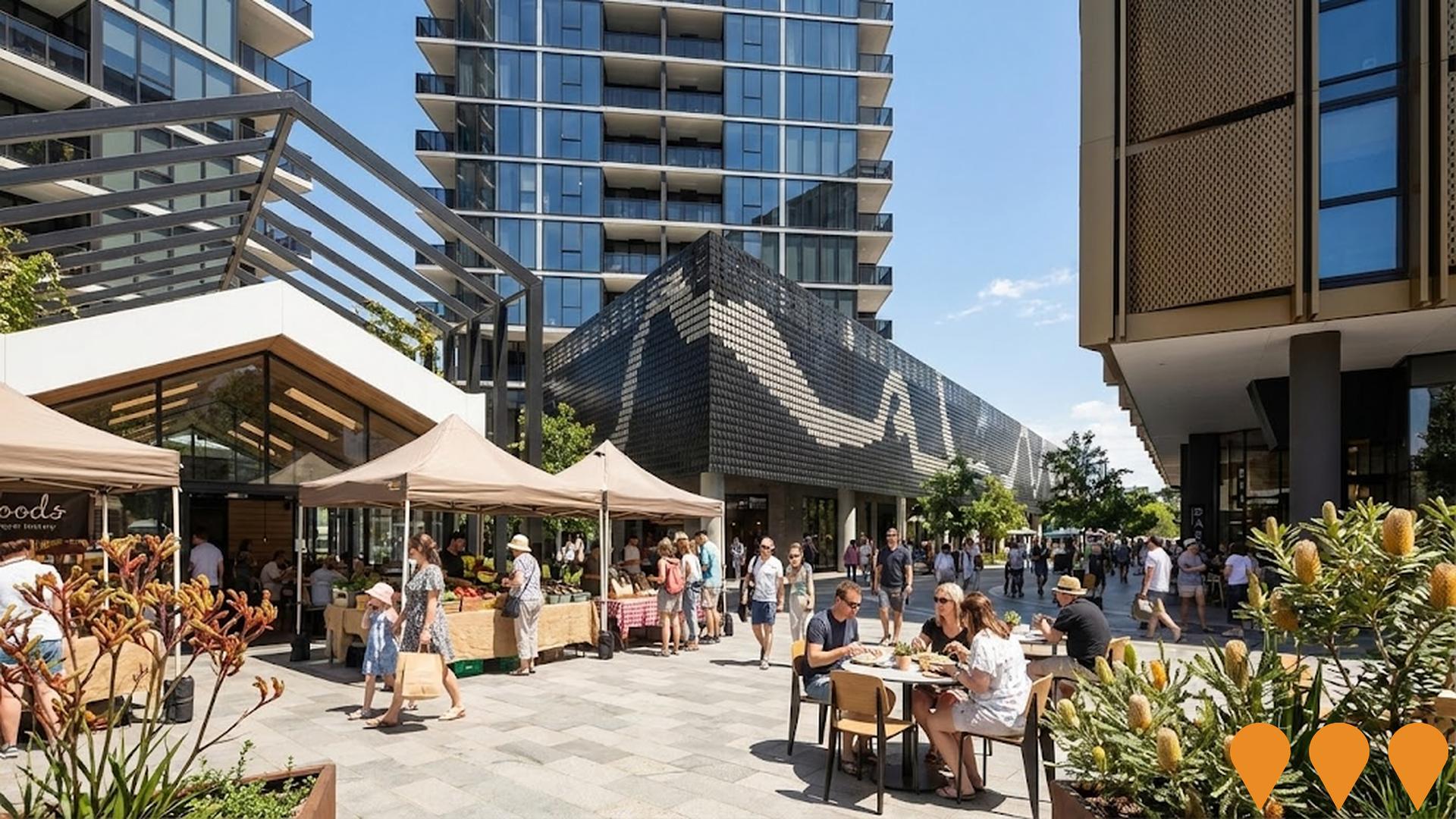
Enhanced bus and light rail corridors (Belconnen & Queanbeyan to Central Canberra)
ACT is progressing an integrated program to enhance high-frequency bus and future light rail corridors that link Belconnen and Queanbeyan with central Canberra. Light Rail Stage 2A (City to Commonwealth Park) commenced construction in early 2025 with services targeted from 2028, while planning and approvals continue for Stage 2B to Woden. The ACT Government has acknowledged and is planning upgrades for the Belconnen-to-City bus corridor as groundwork for a future east-west light rail Stage 3, and is coordinating cross-border public transport initiatives with NSW through the Queanbeyan Region Integrated Transport Plan and the ACT-NSW MoU for Regional Collaboration.
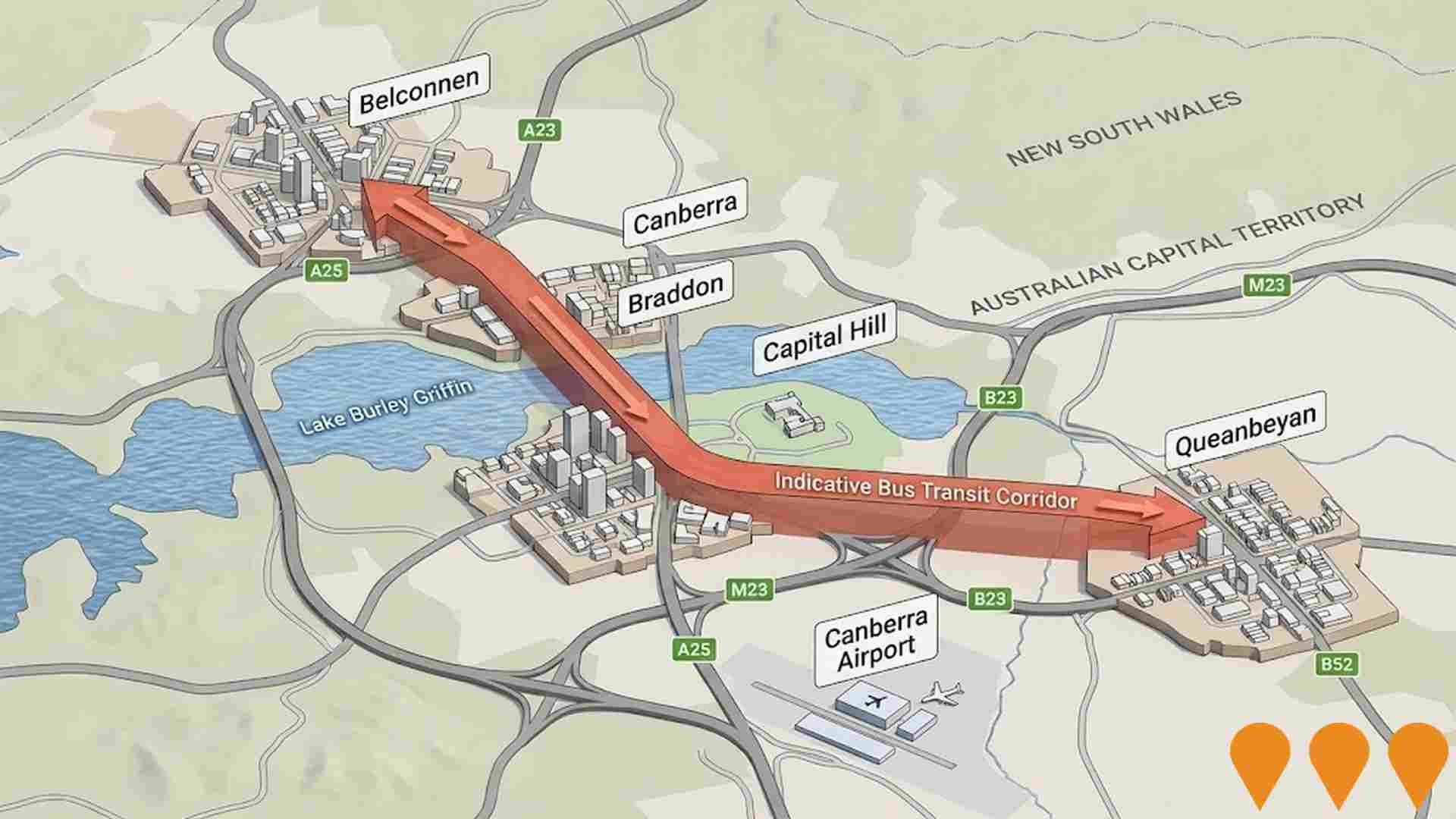
Queanbeyan Regional Integrated Transport Plan
Comprehensive transport planning initiative with 64 key actions for next 10 years. Addresses road safety, active transport connectivity, public transport availability, and future transport needs. Improved connections between Queanbeyan and ACT.
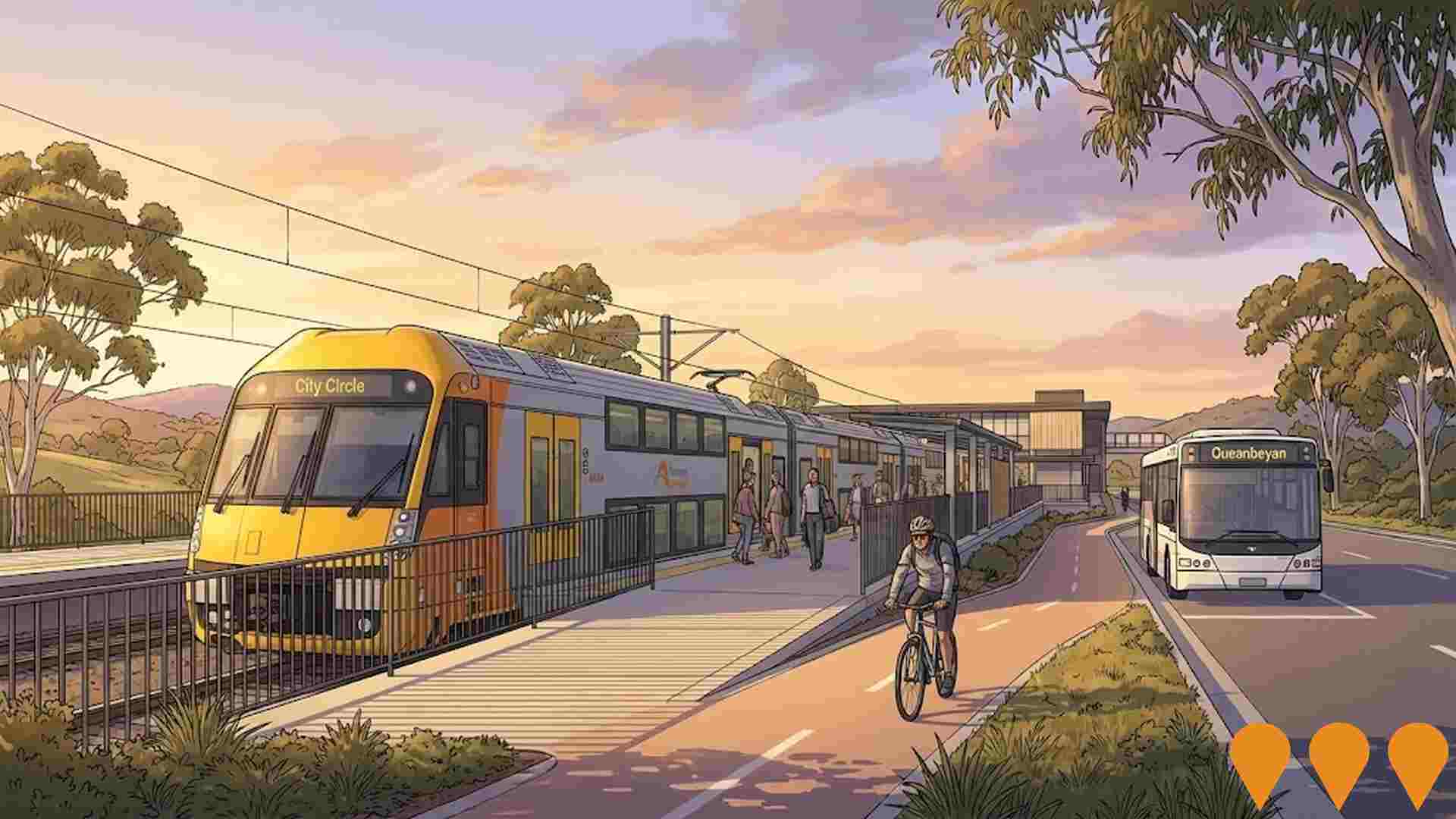
Big Canberra Battery (Williamsdale BESS)
A 250 MW / 500 MWh battery energy storage system at Williamsdale in southern Canberra, delivered by Eku Energy as Stream 1 of the ACT Government's Big Canberra Battery. Construction commenced in November 2024 with partners CPP and Tesla supplying Megapack systems. The asset will connect to Evoenergy's 132 kV network near the Williamsdale substation to provide two hours of dispatchable power, grid services and reliability for the ACT. Target operations in 2026.
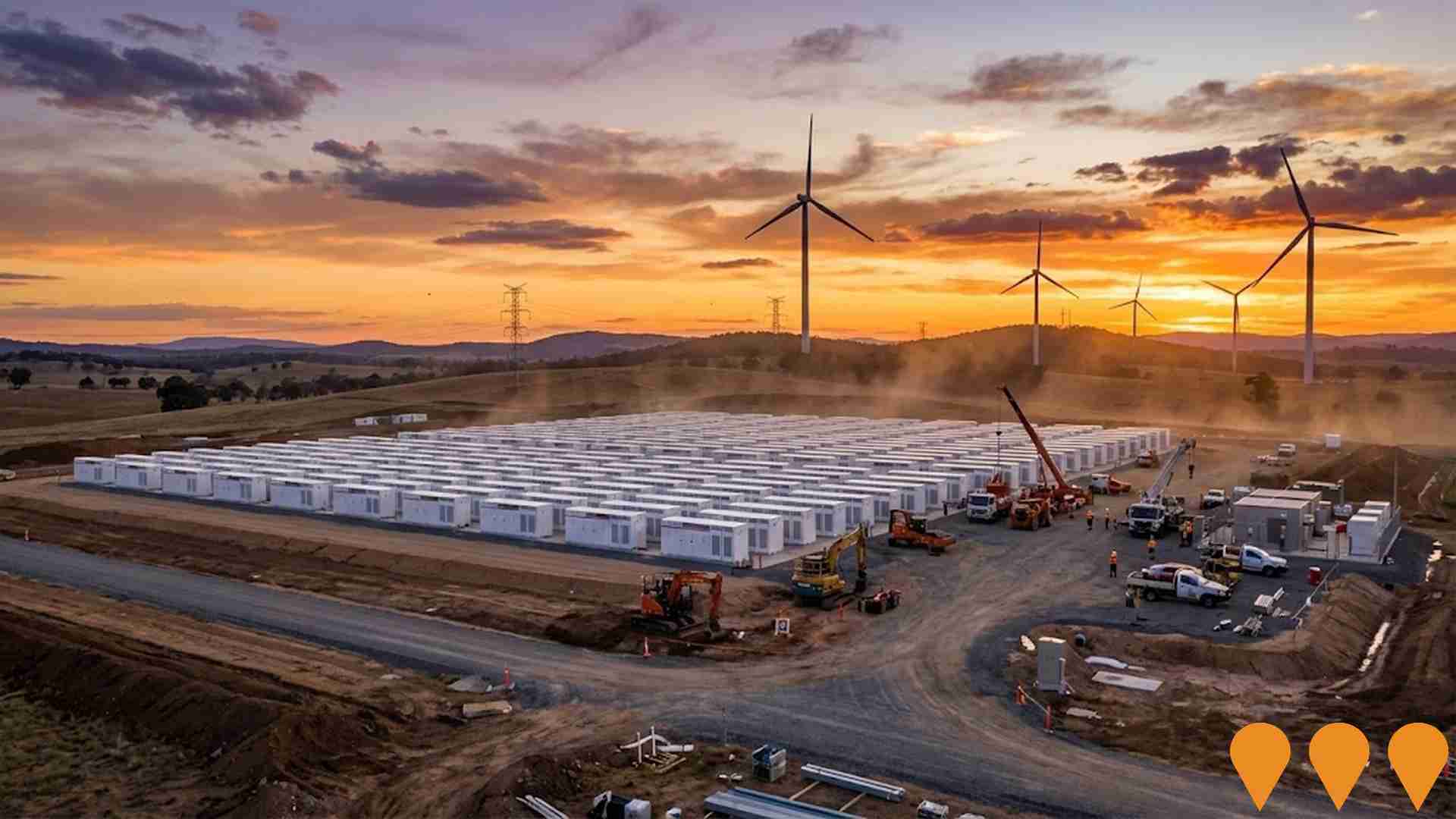
Employment
Employment conditions in Weetangera demonstrate strong performance, ranking among the top 35% of areas assessed nationally
Weetangera has a highly educated workforce with strong professional services representation. Its unemployment rate was 2.4% in June 2025, lower than the Australian Capital Territory's (ACT) rate of 3.4%.
Employment growth over the past year was estimated at 1.7%. As of June 2025, 1,530 residents were employed, with an unemployment rate of 1.0% below ACT's rate and workforce participation at 64.8%, compared to ACT's 69.6%. Employment is concentrated in public administration & safety, professional & technical services, and education & training. Weetangera has a particular employment specialization in education & training, with an employment share of 1.4 times the regional level.
Public administration & safety has limited presence at 28.3%, compared to 30.4% regionally. Employment levels increased by 1.7% and labour force by 1.6% during the year to June 2025, leaving unemployment broadly flat. ACT recorded employment growth of 1.9% and unemployment falling by 0.3 percentage points. National employment forecasts from Jobs and Skills Australia (May 2025) suggest Weetangera's employment could grow by approximately 6.7% over five years and 13.5% over ten years, based on industry-specific projections applied to its local employment mix.
Frequently Asked Questions - Employment
Income
The economic profile demonstrates exceptional strength, placing the area among the top 10% nationally based on comprehensive AreaSearch income analysis
Weetangera's median income among taxpayers was $74,425 in financial year 2022. The average income stood at $93,399 during the same period. These figures are higher than those for the Australian Capital Territory, which were $68,678 and $83,634 respectively. Based on Wage Price Index growth of 13.6% since financial year 2022, current estimates suggest median income would be approximately $84,547 and average income around $106,101 by September 2025. According to Census 2021 data, incomes in Weetangera rank highly nationally, between the 95th and 99th percentiles for household, family, and personal incomes. Income analysis shows that 41.9% of Weetangera's population (1,189 individuals) fall within the $4000+ income range, differing from the regional norm where the $1,500 - $2,999 category is predominant at 34.3%. The locality exhibits significant affluence with 54.5% earning over $3,000 per week, supporting premium retail and service offerings. After accounting for housing costs, residents retain 91.4% of their income, indicating strong purchasing power. The area's SEIFA income ranking places it in the 10th decile.
Frequently Asked Questions - Income
Housing
Weetangera is characterized by a predominantly suburban housing profile, with above-average rates of outright home ownership
The latest Census evaluated Weetangera's dwelling structure as 91.7% houses and 8.3% other dwellings (semi-detached, apartments, 'other' dwellings). In comparison, the Australian Capital Territory had 69.4% houses and 30.5% other dwellings. Home ownership in Weetangera was 48.0%, with mortgaged dwellings at 37.8% and rented ones at 14.2%. The median monthly mortgage repayment in the area was $2,500, higher than the Australian Capital Territory average of $2,000. The median weekly rent figure was $490, compared to the Australian Capital Territory's $430. Nationally, Weetangera's mortgage repayments were significantly higher at $2,500 versus Australia's average of $1,863, and rents were substantially above the national figure of $375.
Frequently Asked Questions - Housing
Household Composition
Weetangera features high concentrations of family households, with a higher-than-average median household size
Family households constitute 80.6% of all households, including 42.7% couples with children, 29.9% couples without children, and 7.6% single parent families. Non-family households make up the remaining 19.4%, with lone person households at 16.4% and group households comprising 2.6%. The median household size is 2.9 people, larger than the Australian Capital Territory average of 2.5.
Frequently Asked Questions - Households
Local Schools & Education
Weetangera shows strong educational performance, ranking in the upper quartile nationally when assessed across multiple qualification and achievement indicators
Educational attainment in Weetangera is notably higher than broader benchmarks. 56.1% of residents aged 15 and above hold university qualifications, compared to 30.4% nationally and 43.8% in the SA3 area. Bachelor degrees are the most common at 29.3%, followed by postgraduate qualifications at 19.4% and graduate diplomas at 7.4%. Vocational pathways account for 18.7% of qualifications among those aged 15 and above, with advanced diplomas at 8.5% and certificates at 10.2%.
Educational participation is high, with 32.2% of residents currently enrolled in formal education. This includes 10.2% in secondary education, 9.9% in primary education, and 7.1% pursuing tertiary education. Weetangera Primary School serves the local community, with an enrollment of 412 students as of a specific date. The school focuses exclusively on primary education, with secondary options available in nearby areas.
Frequently Asked Questions - Education
Schools Detail
Nearby Services & Amenities
Transport
Transport servicing is good compared to other areas nationally based on assessment of service frequency, route connectivity and accessibility
The transport analysis indicates that Weetangera has 17 operational public transport stops. All these stops serve a mix of bus routes, with a total of 6 individual routes in operation. These routes collectively facilitate 673 weekly passenger trips.
The accessibility of the transport system is rated as excellent, with residents typically residing within 194 meters from their nearest transport stop. On average, there are 96 trips per day across all routes, which equates to approximately 39 weekly trips per individual stop.
Frequently Asked Questions - Transport
Transport Stops Detail
Health
The level of general health in Weetangera is notably higher than the national average with prevalence of common health conditions quite low across both younger and older age cohorts
Weetangera shows notably good health outcomes, with low prevalence rates for common conditions across both younger and older age groups. Private health cover is exceptionally high here, at approximately 68% of the total population (1,936 people), compared to 57.1% in Australian Capital Territory and a national average of 55.3%. The most prevalent medical conditions are arthritis and mental health issues, affecting 8.7 and 7.4% of residents respectively, while 69.8% report no medical ailments, slightly higher than the ACT's 68.1%.
Weetangera has a higher proportion of seniors aged 65 and over at 19.1%, with 541 people in this age group compared to 15.3% across Australian Capital Territory. Health outcomes among seniors are above average, generally aligning with the overall population's health profile.
Frequently Asked Questions - Health
Cultural Diversity
Weetangera was found to be more culturally diverse than the vast majority of local markets in Australia, upon assessment of a range of language and cultural background related metrics
Weetangera had a higher cultural diversity than most local markets, with 24.3% of its population born overseas and 18.2% speaking a language other than English at home. Christianity was the predominant religion in Weetangera, making up 42.0% of its population. Hinduism showed an overrepresentation in Weetangera, comprising 3.6% compared to 4.0% across Australian Capital Territory.
The top three ancestry groups were English (27.8%), Australian (23.3%), and Irish (9.9%). Notably, Vietnamese (1.2%) and Scottish (8.8%) populations were overrepresented in Weetangera compared to regional averages of 1.2% and 7.4%, respectively. Additionally, the Russian population was slightly higher at 0.4%.
Frequently Asked Questions - Diversity
Age
Weetangera's median age exceeds the national pattern
The median age in Weetangera is 41 years, which is higher than the Australian Capital Territory's average of 35 years and slightly exceeds the national average of 38 years. The 45-54 age cohort is notably over-represented in Weetangera at 15.6%, compared to the Australian Capital Territory average, while the 25-34 age group is under-represented at 10.2%. According to post-2021 Census data, the 15-24 age group has grown from 13.4% to 16.3%, and the 45-54 cohort has increased from 14.4% to 15.6%. Conversely, the 65-74 age group has declined from 9.9% to 8.4%, and the 35-44 age group has dropped from 12.8% to 11.4%. Population forecasts for 2041 indicate significant demographic changes in Weetangera, with the 55-64 age group projected to grow by 6 people, reaching 319 from 302. Meanwhile, both the 0-4 and 65-74 age groups are expected to decrease in number.
